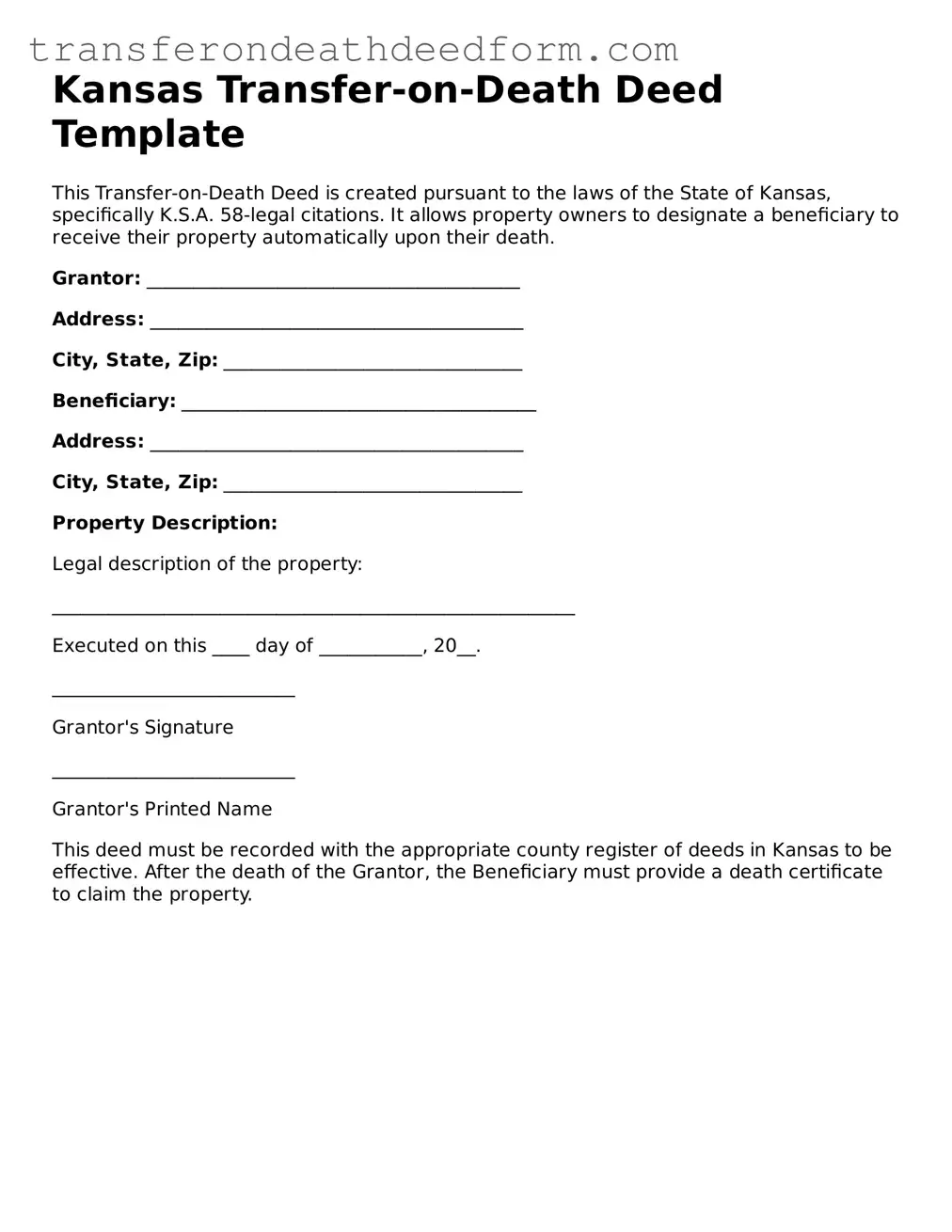Kansas Transfer-on-Death Deed Template
This Transfer-on-Death Deed is created pursuant to the laws of the State of Kansas, specifically K.S.A. 58-legal citations. It allows property owners to designate a beneficiary to receive their property automatically upon their death.
Grantor: ________________________________________
Address: ________________________________________
City, State, Zip: ________________________________
Beneficiary: ______________________________________
Address: ________________________________________
City, State, Zip: ________________________________
Property Description:
Legal description of the property:
________________________________________________________
Executed on this ____ day of ___________, 20__.
__________________________
Grantor's Signature
__________________________
Grantor's Printed Name
This deed must be recorded with the appropriate county register of deeds in Kansas to be effective. After the death of the Grantor, the Beneficiary must provide a death certificate to claim the property.
